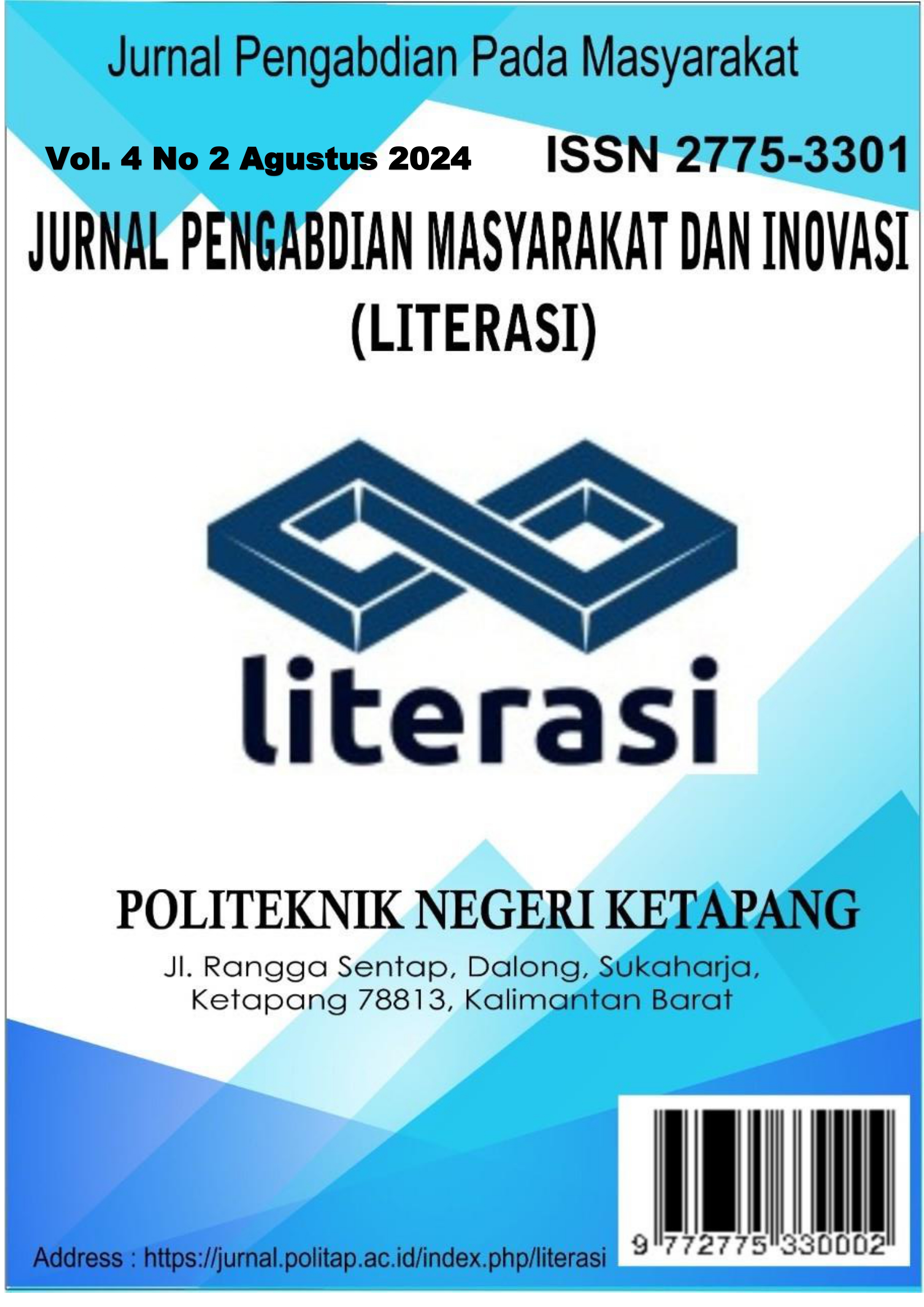Pelatihan Geolistrik Untuk Mendapatkan Potensi Batu Andesit dan Granit di Kecamatan Salatiga Kabupaten Sambas
 https://doi.org/10.58466/literasi.v4i2.1753
https://doi.org/10.58466/literasi.v4i2.1753
Keywords:
geolectric method, resistivity, subsurface mapping, resource potential, invesmentAbstract
The geoelectric method is an effective geophysical method in subsurface mapping by utilizing the electrical properties of rocks. The basic principle of the geoelectric method is to measure resistivity by flowing an electric current into the earth through electrodes. Geoelectrical (resistivity) surveys generally aim to determine the condition or structure of subsurface geology based on variations in rock type resistance. The results of the training showed significant variations in the resistivity of Andesite and Granite rocks, which were indicated as potential resource zones worthy of further exploration. The results of resource potential calculations show that the volume of Andesite is 909,364,491 m³ and the volume of granite is 55,436,878 m³. This training also provides recommendations for residents in Salatiga District, Sambas Regency, to use this as literature to attract investors so they can invest in the area as much as the relevant volume.
References
Loke, M.H., 2020. Tutorial: 2-D and 3-D Electrical Imaging Surveys. Geotomo Software, Malaysia.
Telford, W.M., Geldart, L.P., Sheriff, R.E., 2010. Applied Geophysics, 2nd Edition. Cambridge University Press.
Reynolds, J.M., 2011. An Introduction to Applied and Environmental Geophysics. Wiley-Blackwell.
Griffiths, D.H., Barker, R.D., 1993. Two-dimensional resistivity imaging and modelling in areas of complex geology. Journal of Applied Geophysics, 29(3-4), 211-226.
Milsom, J., Eriksen, A., 2011. Field Geophysics. Wiley.
Loke, M.H., Barker, R.D., 1996. Rapid least‐squares inversion of apparent resistivity pseudosections by a quasi‐Newton method. Geophysical Prospecting, 44(1), 131-152.
Dahlin, T., 2001. The development of DC resistivity imaging techniques. Computers & Geosciences, 27(9), 1019-1029.
Park, S.K., Van, G.P., 1991. Inversion of pole-pole data for 3‐D resistivity structure beneath arrays of electrodes. Geophysics, 56(7), 951-960.
Best, M.G., 2013. Igneous and Metamorphic Petrology. John Wiley & Sons.
Winter, J.D., 2014. Principles of Igneous and Metamorphic Petrology. Pearson Education.
Schofield, N., Gillespie, M.R., 2007. A Guide to 3D Geological Modeling. British Geological Survey.
Sharma, S.P., Biswas, A., 2013. Interpretation of self-potential anomaly over a 2D inclined structure using very fast simulated-annealing global optimization. Geophysics, 78(2), B41-B51.
Burger, H.R., Sheehan, A.F., Jones, C.H., 2006. Introduction to Applied Geophysics. W.W. Norton.
Geotomo Software, 2020. RES2DINV ver. 4.10 - Rapid 2-D Resistivity & IP Inversion using the least-squares method: Wenner (α,β,γ), dipole-dipole, inline pole-pole, pole-dipole, equatorial dipole-dipole, offset pole-dipole, Wenner-Schlumberger, gradient and non-conventional arrays. Geotomo Software, Penang, Malaysia.








